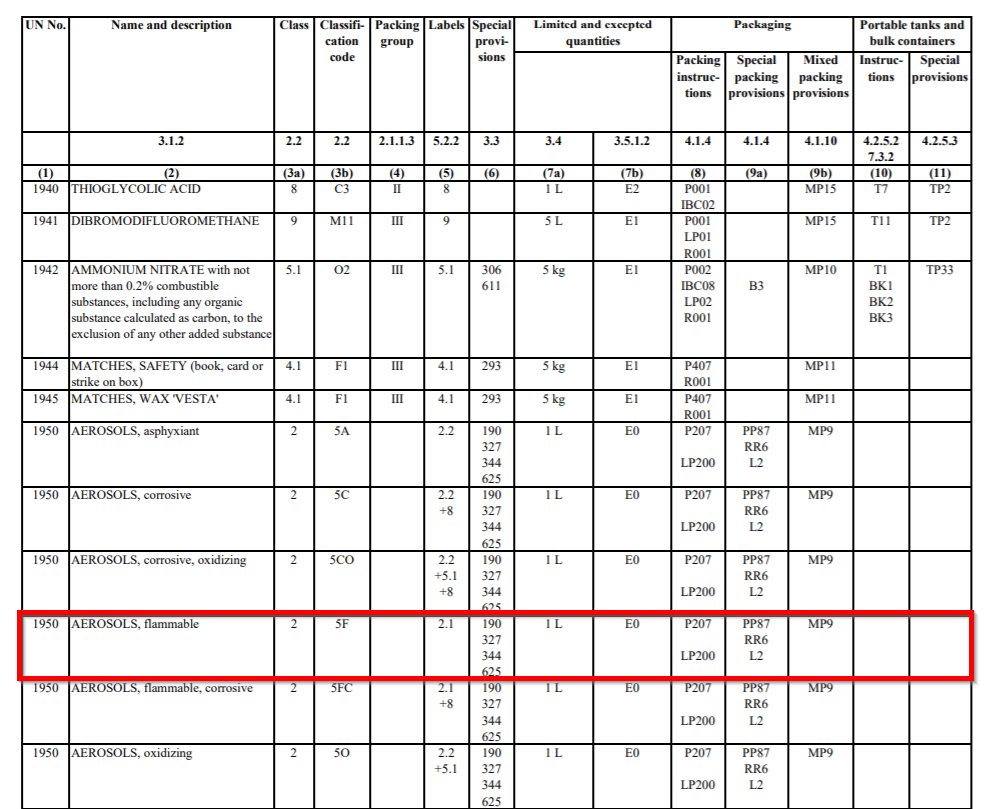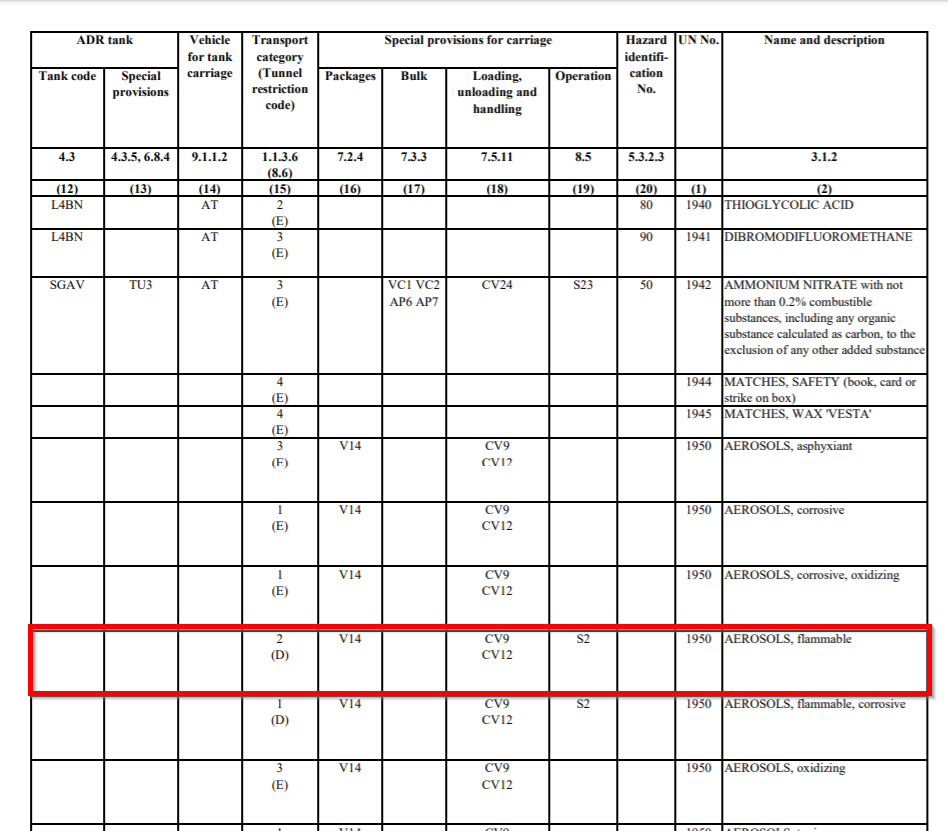Transportation of Dangerous Goods — a Legal Jungle and the New Dangerous Goods Management in D365

We come across dangerous goods again and again in our everyday lives—from deodorant spray to batteries, power packs, colorants or New Year’s fireworks. So, in a way, all of us are familiar with the transportation of dangerous goods. We therefore invite you to join us in this article on a short excursion into the arena of dangerous goods and enter this legal jungle together
How can hazardous substance management be kept under control? A GSM integrated in the ERP system will support you in complying with legal regulations.
What are Dangerous Goods?
Dangerous goods are defined as goods which, by their nature, pose a danger to the general public during transportation on public highways. These goods are classified as dangerous during transportation because of their preparation (mixtures, blends, solutions), their physical or chemical properties or their state during transportation.
A Legal Jungle
Transportation of dangerous goods is subject to strict legal regulations. The regulations differ depending on the transportation route—for example, the following regulations for the transportation of dangerous goods apply in Europe:
- ADR—European Agreement concerning the international carriage of dangerous goods by road
- RID as part of COTIF—Convention concerning international carriage by rail
- ADN—European Agreement concerning the international carriage of dangerous goods by inland waterways
- IMDG Code—Transportation regulations for dangerous goods by sea
- DGR (IATA Dangerous Goods Regulations)—Regulations for the transportation of dangerous goods by air by IATA carriers
It quickly becomes clear that many different laws are involved, which apply differently depending on the transportation route and transport chain. These are very extensive and complex regulations which are amended at regular intervals—for example, a new edition of the ADR Agreement is published every 2 years. Companies that regularly undertake transportation of dangerous goods therefore need personnel who are trained to take responsibility for this. It is not only advisable, but a legal requirement to have a trained and appointed dangerous goods officer.
Is Every Transport of Dangerous Goods Subject to These Regulations?
The first question to arise is, of course, whether these laws apply to every transportation of dangerous goods. Let’s look at a practical example:
You purchase 7 cans of spray paint from the DIY store for metal painting in your own household and transport them home by car. Does this transportation of pressurized gas packagings count as transportation of dangerous goods that fall under the ADR law? In principle, the ADR directory contains a list of all substances and the UN number assigned to them. The law assigns number 1950 to compressed gas packaging—so at first glance this appears to be a transportation of dangerous goods.
However, to avoid road transportation of every single spray can (such as deodorant sprays, hair sprays or paint sprays) being covered by these provisions, the law provides an exemption in the case of private individuals. The definition is that the ADR provisions do not apply to the carriage of dangerous goods when they are transported by private individuals for their personal or domestic use or for leisure and sport, provided that the goods are packaged for retail sale and that the contents cannot escape under normal conditions of carriage (see ADR section 1.1.3). This means that private transportation of dangerous goods generally does not fall within the scope of this law. Companies do not have this advantage, but it is possible to make the transportation of dangerous goods easier—in particular with the exemption under 1.1.3.6 and the possibilities of limited and exempted quantities (see ADR sections 3.4.6 and 3.5.1).
The 1000 Point Rule
Companies are able to make use of this exemption option in section 1.1.3.6, which we will now look at in more detail. For UN No 1950, column 15 of the ADR table must be consulted in order to determine the transport category.


Flammable aerosol dispensers are in transportation category 2, according to which 333 kg net mass can be transported exempt for Class 2 (gases) in accordance with 1.1.3.6. But what about the joint transportation of various dangerous goods assigned to different transportation categories?
In this case, the substances of the respective transportation category must be multiplied by different factors (e.g: factor 50 for category 1, factor 3 for category 2, etc.—see ADR 1.1.3.6.4), whereby the calculated value must not exceed 1,000—also known as the 1,000 point rule.
In the case of this exemption, “only” the prohibitions of mixed loading apply, an ADR-compliant transport document must be carried, the dangerous goods must be transported in tested packaging and with correct labeling. This means that many regulations do not have to be complied with here, such as obligatory marking of vehicles with placards or an orange board, obligatory dangerous goods driver’s license, and special training for vehicle occupants, or the requirements for and equipment of vehicles. At most, a transportation document must be carried with every transportation of dangerous goods, which must contain certain information such as the UN number, the official name of the substance, the packaging group and the name and address of the sender and recipient.
Dangerous Goods in Microsoft Dynamics 365 Supply Chain Management
Microsoft has brought a number of new functions to the market with the update to version 10.0.9 to more effectively cover the requirements with regard to dangerous goods. The information for this is set up in the production information management. It is now possible to define whether a released product is to be classified as dangerous goods.

Do you want to talk to one of our specialists about how you can properly handle hazardous materials? Contact us!
Furthermore, information on the shipping documentation such as dangerous goods regulations, classification groups or packaging groups can be set up and directly assigned to this article.
The dangerous goods documents can be generated and edited in the storage location management, and then added to the delivery. Documents such as the shipper’s declaration, a delivery summary and the document for the carriage of commercial goods by road are available here. The 1,000 point rule mentioned earlier can now be mapped within the ERP system. The multiplication factor is defined on the product for this purpose and multiplied by the quantity being delivered—the result is visible in the delivery summary and can be carried during transportation.
Microsoft has created a way to capture the necessary information and generate documents in the ERP system with this new dangerous goods feature. This means companies will, in future, be able to establish a process to meet their legal obligations.
At COSMO CONSULT, we have the expertise it takes to give you the best advice and support in this process. Let’s get going and start our joint journey into the dangerous goods jungle.
Anmerkung: (no translation)
- ADR = Accord européen relatif au transport international des marchandises Dangereuses par Route
- RID = Règlement concernant le transport international ferroviaire de marchandises Dangereuses
- COTIF = Convention relative aux transports internationaux ferroviaires
- ADN = Accord européen relatif au transport international des marchandises dangereuses par voie de navigation intérieure
- IMDG = International maritime code for dangerous goods
- DGR = Dangerous Goods Regulations
- IATA = International air transport association

